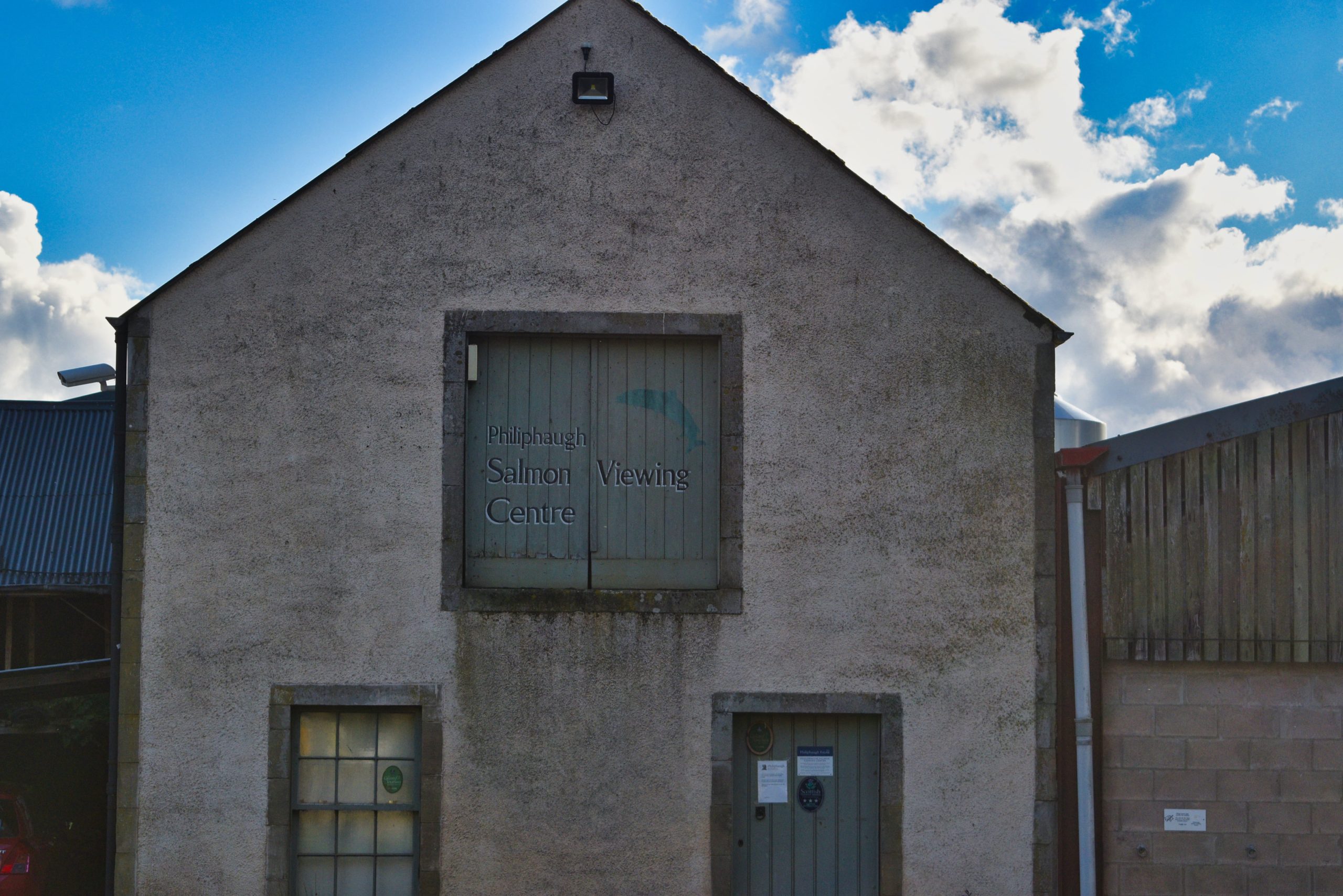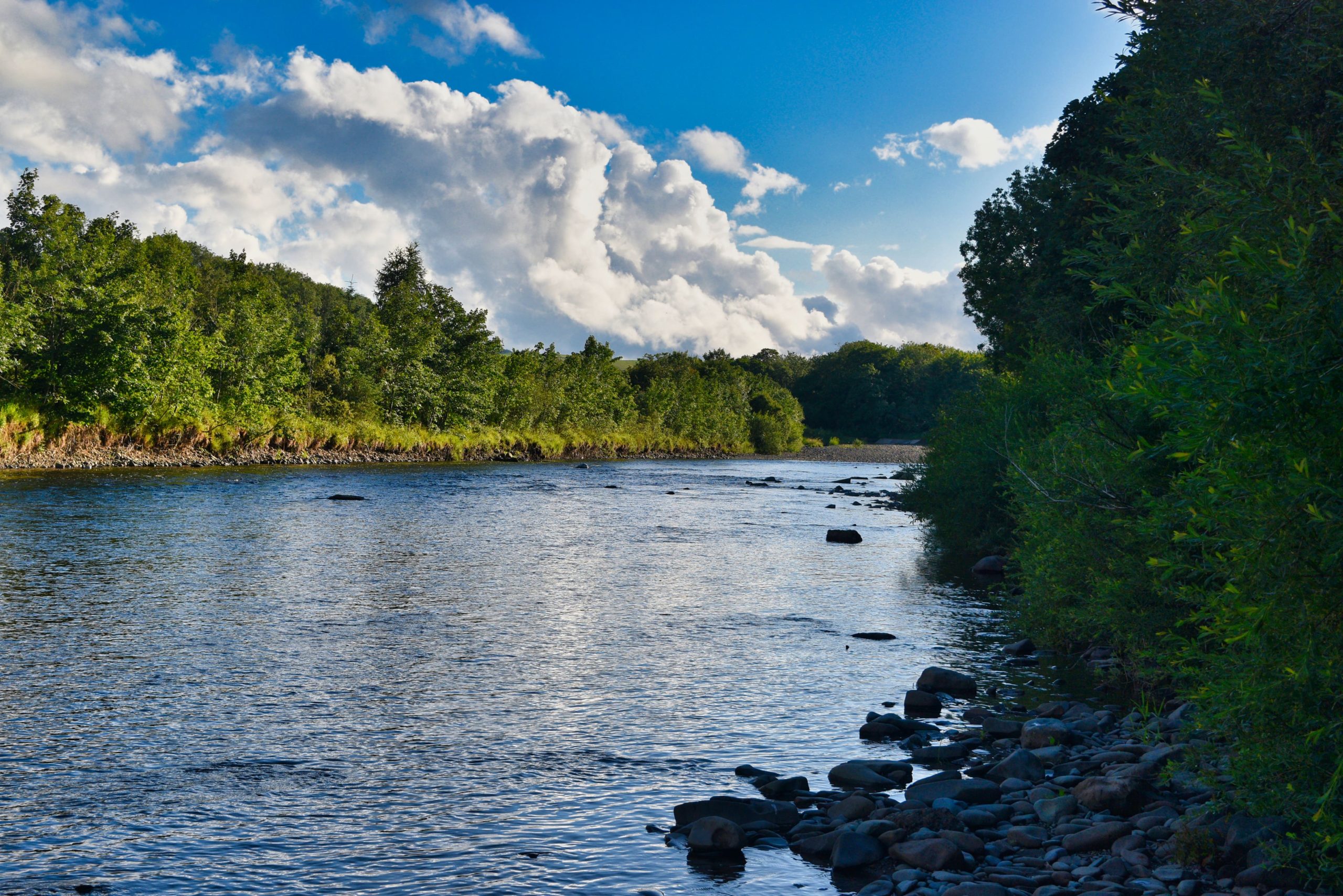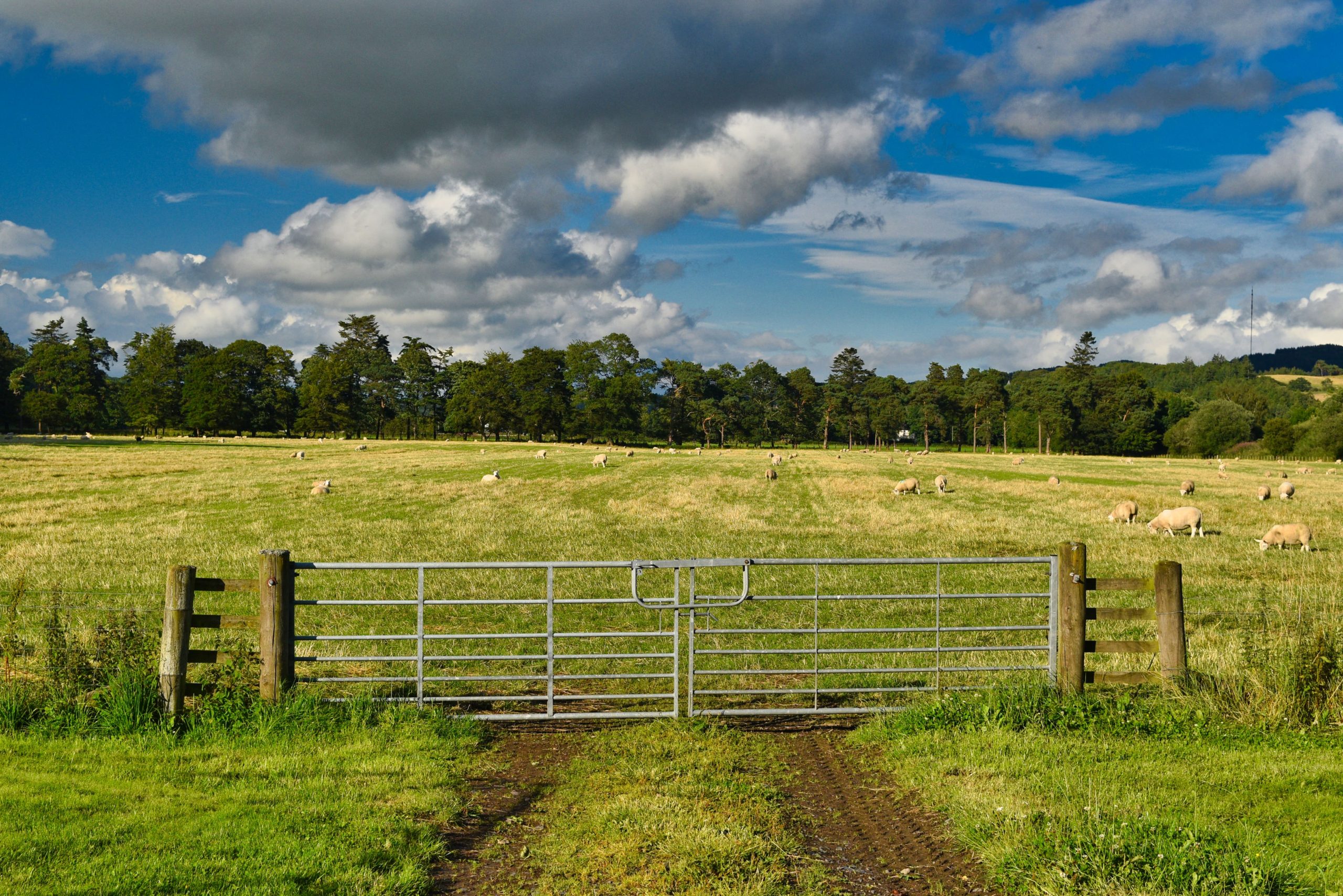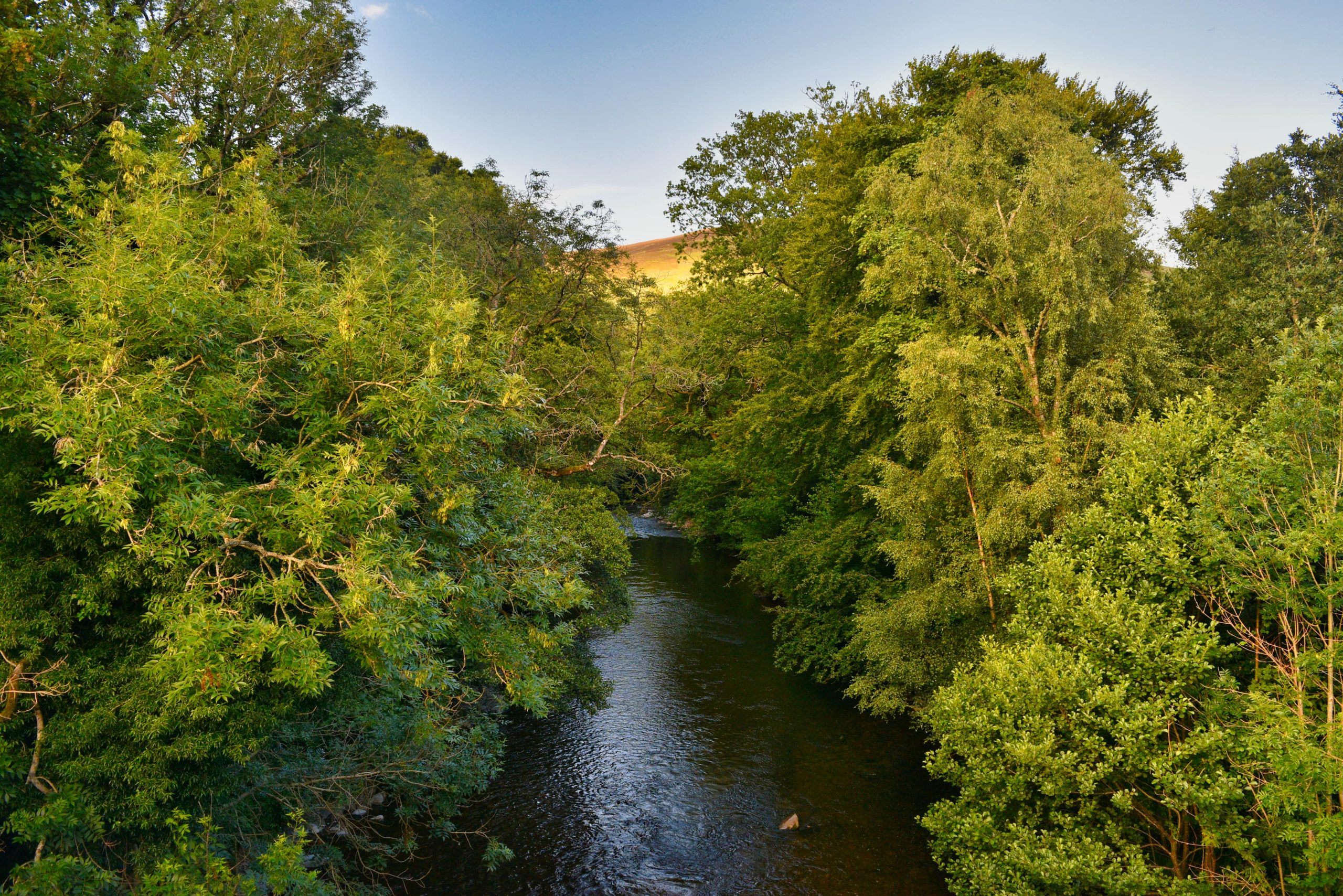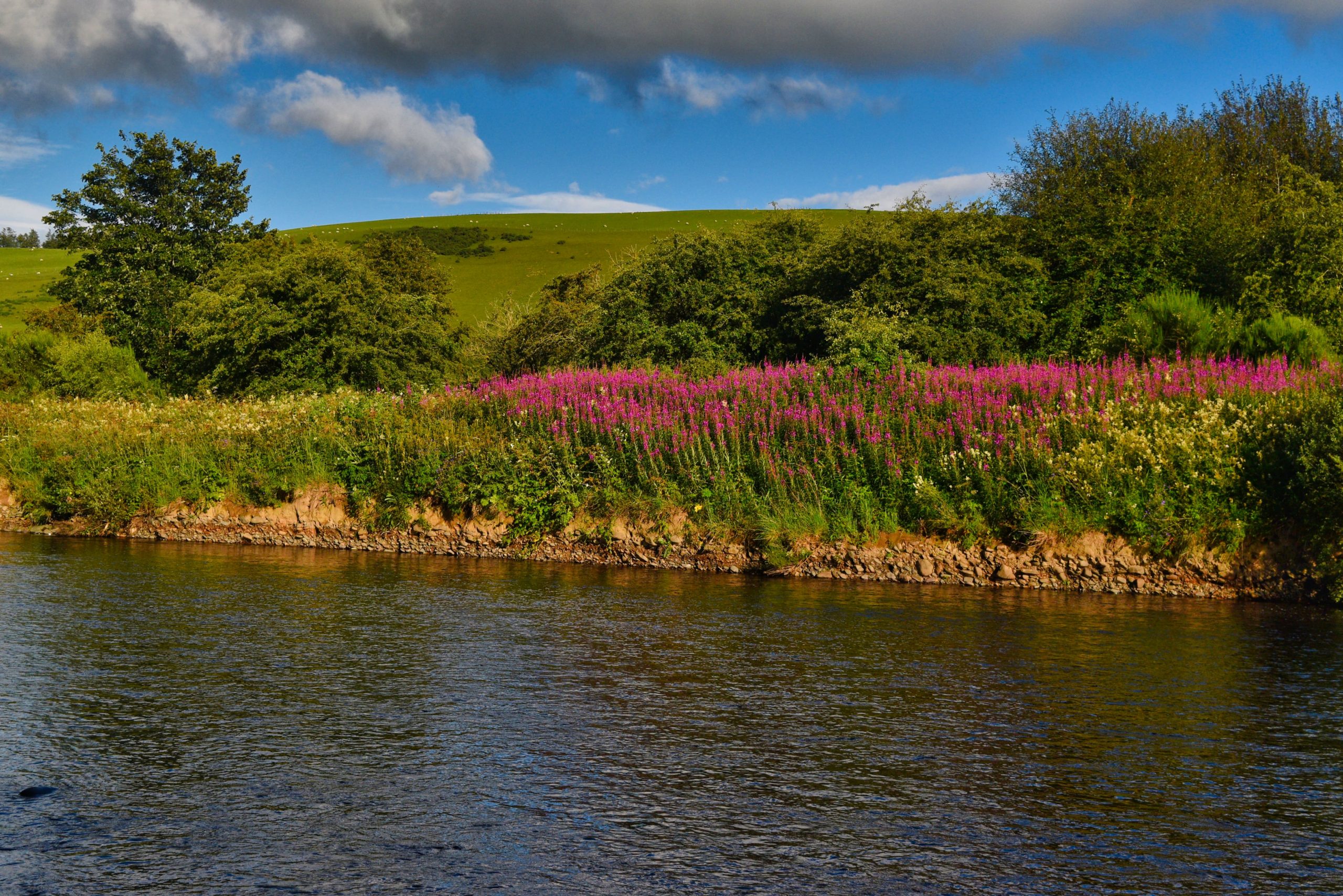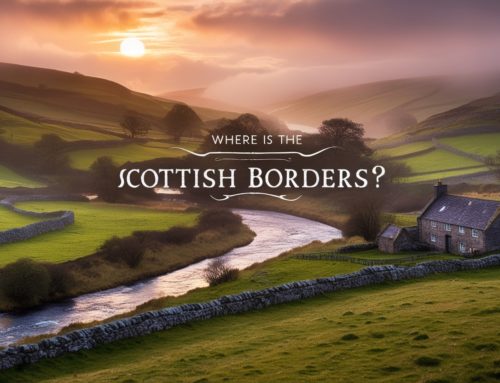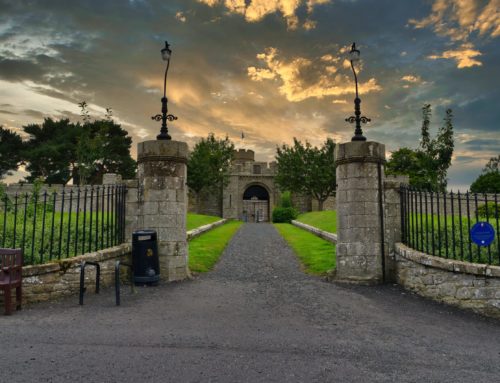Philiphaugh Salmon Viewing Centre
You can take a bracing walk on the beautiful Philiphaugh Estate, followed by some home-cooked delights at The Waterwheel Restaurant.
Estate Leaflets with trail routes are available from the Salmon Viewing Centre and The Waterwheel.
For the best chance to see any wildlife you will need to be out and about when it is quiet, dawn is the best time of day for wildlife watching. Chance sightings can happen at any time during the day though.
Wear dull colours of rustle free clothing, and remember to be alert and watchful. Take time to stop and scan the surroundings with binoculars.
The Waterwheel and Sawmill
This water-driven sawmill has been in existence since about 1856. It was driven firstly with a wooden wheel, and this was replaced by the present wheel in about 1885. The waterwheel was also used to drive the threshing mill at the farm. It has recently been restored but permitted flows of water down the Mill Lade are insufficient to turn the wheel
Water was diverted by the cauld from the river to power the sawmill and in 1874 the mill lade was extended to Selkirk to power a tweed mill built by the Roberts Brothers.
Although the waterwheel is no longer in use the wheel can still be viewed from the bridge over the mill lade where an explanation of its workings can be read on the information board.
The 1645 Battle Of Philiphaugh
Philiphaugh is the site of a fierce and bloody battle, fought between the Covenanters and the Royalists on the 13th September 1645.
The Covenanters were supporters of a Scottish Presbyterian faith, which was under threat from Charles 1. The Royalists were supporters of the Crown and willing to defend the King’s rule.
The Protagonists
General Sir David Leslie, leader of the Covenanters was an experienced soldier having fought in the continental wars for thirty years.
The Marquis of Montrose commanded the Royalist Army and had already defeated the Covenanters in Scotland in six previous battles.
The Battle
Montrose marched to Selkirk on 12th September 1645 hoping to recruit more soldiers to the Royalist cause. He spent the night along with most of his officers in Selkirk town leaving the rest of his troops camped in the fields at Philiphaugh.
General Leslie having been informed about the location of Montrose’s army made a surprise attack during the early morning mist of 13th September. The Royalists repulsed this initial assault. The noise from the encounter alerted Montrose who galloped to the battlefield. He mustered his troops against a second wave of attack but meanwhile 2000 horsemen from General Leslie’s Cavalry had skirted around Howden Hill and began attacking the Royalist army from the rear. Back at the front, General Leslie placed himself at the head of his battalions and attacked the Royalist foot soldiers, driving them towards the high ground at Calton Cottage.
The Royalist army was in disarray; the cavalry fled leaving the foot soldiers surrounded. Some managed to fight their way out leaving behind the Irish contingent who were promised their freedom if they surrendered. The Covenanters went back on their word and put them to the sword along with the camp followers. The remaining prisoners were taken to Newark Castle and were shot and buried in the field, which has become known as Slain Men’s Lea.
Montrose was persuaded by his men to leave as the battle was lost and he fled across the Minch Moor towards Traquair with his remaining cavalry.
Montrose and The Royalists
The Marquis of Montrose was a Covenanter commander in 1639 and fought with distinction in Aberdeenshire. However, he changed his allegiance because although he was still a supporter of Presbyterianism, he feared that the Covenanters would abolish the monarchy. So he gave his support to the King.
He became the King’s Lieutenant and commander of the Royalist army in Scotland. He led successful campaigns against the Covenanters and defeated them in six battles. His troops were mainly made up of Scottish Highlanders and Irish. After victory in Kilsyth, large numbers of Highlanders returned home to bring in the harvest. Montrose moved his men south towards the border in the hopes of enlisting more men to the Royalist cause.
He set up camp in Selkirk with 1000 foot soldiers and 500 cavalry on the eve of the Battle of Philiphaugh.
Leslie and the Covenanters
The Covenanters had their support mainly in the lowlands. Outdoor services, attended by hundreds, were being held in remote, hidden glens and their leaders and ministers were being hanged, shot or imprisoned by the King’s soldiers.
General Sir David Leslie was an experienced soldier and a Covenanter, having signed the Covenant of 1638 set up to prevent the religious “innovations” being imposed by King Charles I.
Leslie and his army crossed the border to Newcastle at the request of the Parliamentarians, another group who had taken a stand against Charles. He returned North, meeting up with forces at Gladsmuir, West of Haddington, East Lothian, before turning South towards Selkirk and Philiphaugh. Locals sympathetic to the Covenanters cause, acted as guides and supplied information about the Royalist troops and their movements. Leslie’s force was made up of 4000 cavalry and 2000 men on foot.
Aftermath of the Battle.
With the battle lost, Montrose was persuaded by his staff to flee the battlefield. In close formation with some of his remaining mounted troops he fought through the encircling Covenanters, making his way over Minch Moor towards Traquair and Peebles.
Montrose never regained his full command, the Royalist cause was finished in Scotland. After a defeat at Carisdale in1650, he was captured, given a sham trial and later executed on Edinburgh High Street.
His severed head was displayed on a spike above the Tollbooth.
General Sir David Leslie was awarded a substantial amount of money for his service at Philiphaugh. In 1650 Charles II accepted the Covenant and Leslie was given the command of the Scots army against Cromwell at the Battle of Dunbar, which ended in defeat for the Scots. Leslie was later taken prisoner at Worchester fighting for Charles II’s Royalist army.
In May 1660, almost two years after Cromwell’s death, Charles II was crowned King of a United Kingdom. Leslie was ennobled as Lord Newark by Charles II. Leslie died in 1682.



